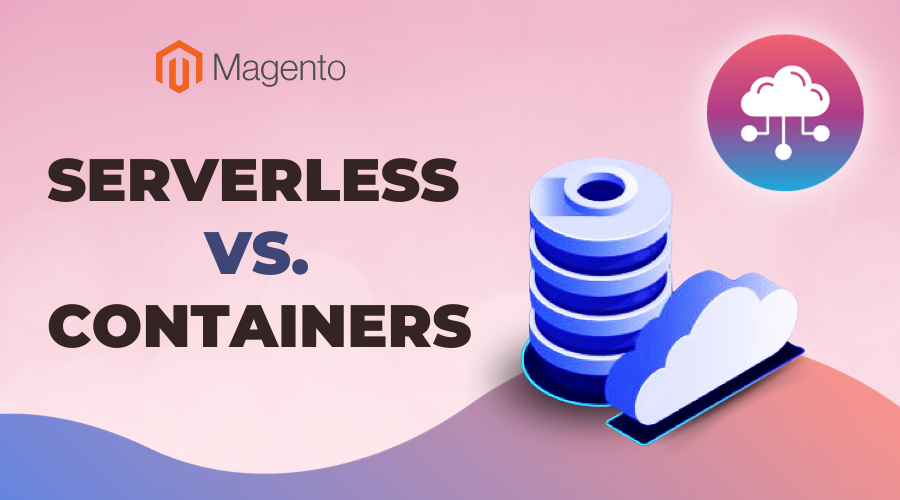
In the ever-evolving landscape of mobile application development and deployment, choosing the right architecture is critical to the success of your project. Among the many decisions you will make, one of the most critical is whether to go with a serverless or containerized solution.
This article explores the benefits of both serverless and container approaches and will help you determine which one is better for your mobile application, keeping scalability and cost-effectiveness in mind.
Table of Contents
I. Mobile app deployment: The essence of user experience
Mobile apps have become an integral part of our daily lives, serving as tools for communication, entertainment, productivity and more. The success of a mobile application depends not only on its functionality, but also on the smoothness of the user experience. This makes the deployment process a critical factor.

Deployment in this context refers to the process of making your application available for users to download and use. Essentially, it’s a bridge that connects your codebase to end-user devices. To make the right decision between serverless and containerization, let’s dive into the intricacies of both options.
1. The appeal of serverless architecture
Serverless architecture, often referred to as Function as a Service (FaaS), is an attractive choice for mobile app deployment. It gained popularity due to its flexibility and ease of use. Key characteristics of serverless architecture include:
- Scalability: Serverless platforms, such as AWS Lambda and Google Cloud Functions, automatically scale your application according to incoming traffic. This means that if your mobile app suddenly experiences a surge in users, serverless infrastructure can handle it without manual intervention.
- Cost Efficiency: With serverless, you pay for the actual usage of resources. There’s no need to maintain and pay for a dedicated server or virtual machines, making it a cost-effective choice for apps with variable or unpredictable traffic.
- Automatic Management: Serverless platforms manage infrastructure and server-related tasks, allowing developers to focus on writing code rather than configuring servers and maintaining infrastructure.
- Reduced Latency: Serverless architectures typically have lower latency as the functions are executed closer to the end-users, ensuring a smoother experience.
- Easy Integration: Serverless platforms often provide easy integration with other cloud services, making it seamless to incorporate functionalities like databases, storage, and authentication into your mobile app.
2. Containerization: the power of control
Containers, on the other hand, offer a more traditional approach to mobile app deployment. Containerization, primarily driven by technologies like Docker and Kubernetes, provides a self-contained environment for your application. Key characteristics of containerization include:
- Portability: Containers encapsulate your app and its dependencies, making it easy to move the application across different environments, from development to production, and even between cloud providers.
- Control and Customization: With containers, you have complete control over the environment in which your app runs. This control allows you to fine-tune the infrastructure for optimal performance.
- Isolation: Containers provide isolation between different parts of your application, enhancing security and ensuring that issues in one part of the app don’t affect the others.
- Resource Management: While containers don’t scale automatically like serverless, you have more control over resource allocation, which can be advantageous for applications with predictable and consistent workloads.
- Flexibility: Containers are not limited to a specific programming language, which means you can use different languages and frameworks within a single application.
II. Serverless vs Containers: Which one is the best fit?

If it’s a challenge for you to find out which is more suitable for your mobile app, let’s jump into this section. We got you covered and will show you several key points to consider between them.
1. When to choose serverless for your mobile app?
Serverless architecture is a great choice for mobile apps under certain circumstances. If any of the following scenarios apply to your project, serverless might be the way to go:
- Unpredictable Traffic: If your mobile app is expected to experience varying levels of traffic, such as a retail app that sees increased activity during sales events, serverless can automatically scale to handle the surge.
- Cost Sensitivity: When you’re budget-conscious, serverless offers cost efficiency, as you only pay for what you use. This makes it ideal for startups or apps without a stable user base yet.
- Rapid Development: If speed to market is crucial, serverless allows developers to focus on coding features rather than managing infrastructure, speeding up the development cycle.
- Integration with Cloud Services: If you plan to incorporate various cloud services, such as databases, AI, or authentication, into your mobile app, serverless platforms offer seamless integration options.
- Reduced Latency: If low latency is a critical requirement for your app, serverless can help by executing functions closer to end-users, providing a more responsive experience.
2. When to choose containers for your mobile app?
Containers offer distinct advantages that make them suitable for certain mobile app scenarios. Consider the following situations when choosing containerization:
- Consistent Workloads: If your app experiences a steady and predictable workload, containerization allows you to optimize resource allocation for maximum performance.
- Complex Applications: For mobile apps with multiple components, each with different dependencies and requirements, containers provide a way to encapsulate and manage each part independently.
- Portability: If you foresee a need to move your app between different environments or cloud providers, containers make the transition smoother due to their portability.
- Custom Infrastructure Requirements: When your app requires a high degree of customization and control over the infrastructure, containers provide the flexibility to configure the environment as needed.
- Multi-Language Development: If your development team prefers to use different programming languages or frameworks, containerization allows you to integrate various technologies within a single application.
III. Finding the right balance: Combining serverless and containers
In some cases, it’s not about choosing between serverless or containers but finding a harmonious balance between the two. This approach is often referred to as a hybrid architecture, and it can offer the best of both worlds.
For example, you can use serverless for components of your mobile app that require auto-scaling and flexibility, such as authentication or image processing. At the same time, you can leverage containerization for parts that need fine-tuned resource allocation and customization, like complex data processing.

The key to a successful hybrid approach is effective communication between the serverless vs container components of your app. This ensures seamless data flow and coordination between different parts of the application.
The Decision Matrix: What to Consider
When deciding whether to opt for serverless, containerization, or a hybrid approach, consider the following factors:
- Application Complexity: Evaluate the complexity of your mobile app. Is it a simple utility or a feature-rich, multifaceted application? Simplicity often aligns with serverless, while complexity may favor containerization.
- Scalability Needs: Analyze your app’s expected traffic patterns. If you anticipate unpredictable surges, serverless might be the better choice, but if you have a consistent user base, containers could be more appropriate.
- Resource Control: Consider your need for resource control. If your app requires fine-tuning of resources, containerization provides the necessary control, while serverless offers automated scaling.
- Latency Requirements: If low latency is crucial, serverless may have an edge due to its ability to execute functions close to end-users.
- Cost Sensitivity: Assess your budget. Serverless can be more cost-effective for startups and apps with variable workloads, while containers allow more cost control for predictable workloads.
- Integration Points: Determine the cloud services and integrations your app needs. If you require seamless integration with various services, serverless can simplify the process.
- Development Speed: Consider your development timeline. If you need to get your app to market quickly, serverless can speed up the development process.
- Long-Term Strategy: Think about your long-term goals. If you plan to evolve your app, scalability, and portability may become more important over time.
IV. Conclusion: A dynamic choice for a dynamic world
In the realm of mobile app development, there is no one-size-fits-all solution. The choice between serverless and containerization, or a combination of both, depends on your specific project’s needs and goals.
Serverless architecture is an excellent choice for applications with unpredictable workloads, cost constraints, and a need for rapid development and integration. On the other hand, containerization offers a high degree of control, making it suitable for consistent workloads, complex applications, and scenarios where portability is paramount.
The most successful mobile apps often strike a balance by using both serverless and containers strategically. This dynamic choice ensures that your app can adapt to the ever-changing demands of the mobile world, providing an optimal user experience while managing costs effectively. As the mobile landscape continues to evolve, your ability to adapt and choose the right architecture will be key to the success of your mobile app.
Author bio
Mr. Mohammed Mozammil is a Director of Engineering at Apptware. He has more than 11 years of extensive Software development experience and has contributed to multiple projects with different roles and responsibilities.












![[SALE OFF] Discount 30% All Premium Extensions On Christmas And New Year 2025 christmas-and-new-year-2025](https://landofcoder.b-cdn.net/wp-content/uploads/2024/12/christmas-and-new-year-2025-1-218x150.png)






